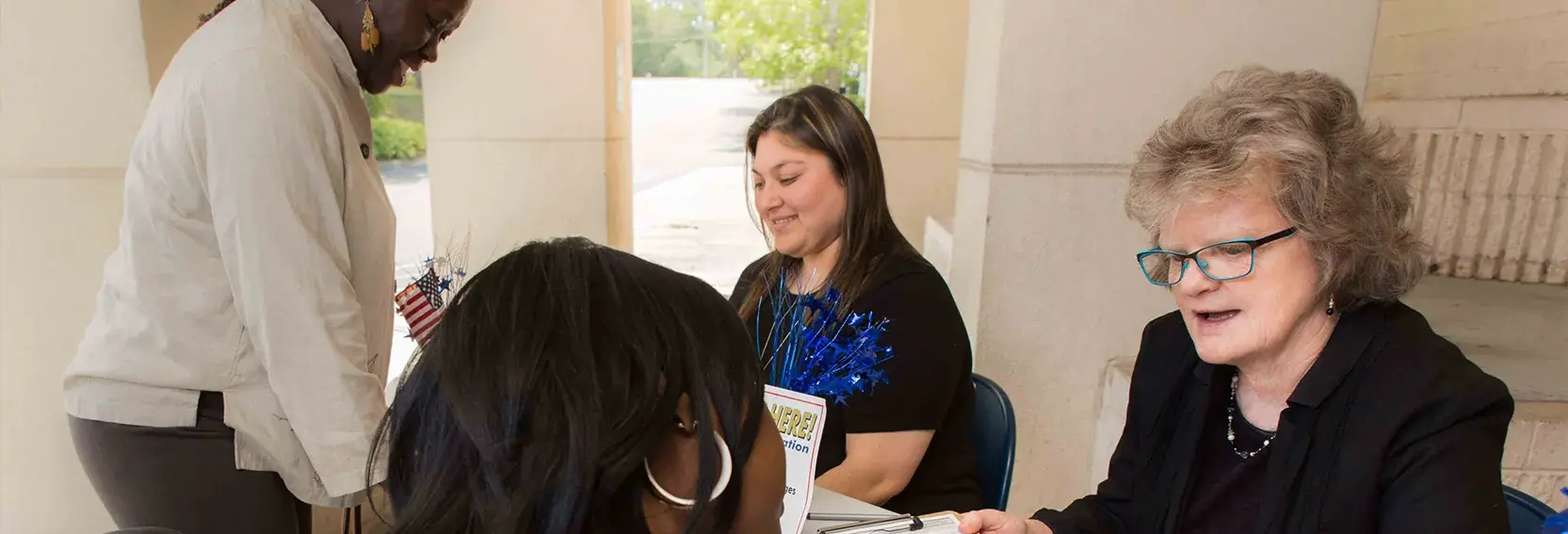One in four Americans has a disability, making the disability community potentially the largest minority voting bloc in the United States. However, people with disabilities don’t vote at the same rate as their non-disabled peers. This is commonly referred to as the disability voting gap. During the 2020 election, the disability voter gap was 5.7%. 17.7 million people with disabilities reported voting in the November 2020 elections. If the disability community voted at the same rate as their non-disabled peers there would have been an additional 1.75 million votes cast in the 2020 election.
Voting Access Issues
Number of voters and non-voters in 2020
| Voting | Not Voting | |
|---|---|---|
| Overall | 154.6 | 77.0 |
| People without disabilities | 136.9 | 66.0 |
| People with disabilities | 17.7 | 11.0 |
| Hearing impairment | 6.1 | 2.8 |
| Visual impairment | 2.3 | 1.6 |
| Mental or cognitive impairment | 4.7 | 4.5 |
| Difficulty walking or climbing stairs | 9.8 | 6.5 |
| Difficulty dressing or bathing | 2.3 | 2.3 |
| Difficulty going outside alone | 5.3 | 5.0 |
| People without disabilities in disability households | 13.1 | 6.9 |
| Total in disability households | 30.8 | 17.9 |
Even though voting is considered one of our most basic rights, voters with disabilities can often find casting a ballot challenging. According to a 2016 Election Day study done by the U.S. Government Accountability Office (GAO), 60% of polling locations were inaccessible. Issues such as lack of transportation, signature matching requirements, and failure to provide information in accessible formats can all create obstacles for voters with disabilities throughout the voting process.
Ensuring Elections Accessibility During COVID-19
The public health crisis created by the COVID-19 global pandemic has made it even more important for election officials to understand the varied accessibility needs and preferences of voters with disabilities in the state.
Additionally, we run courses and trainings for Election Supervisors, volunteer coordinators, and other election workers on how to manage accessible polling places and election practices. We offer assistance in areas such as:
- Operating accessible voting equipment
- Teaching poll workers how not to oppress people
- Other topics that are also important
